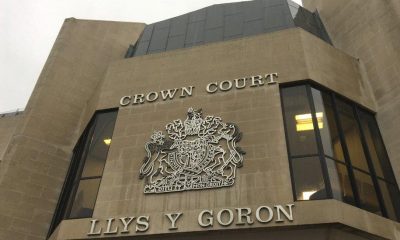News
What next for West Wales?
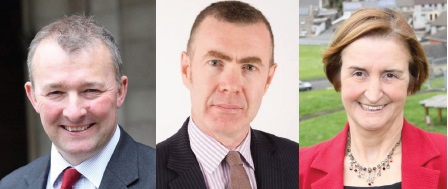

Simon Hart: Striking a balance is important Adam Price: Wales ‘faces biggest economic challenge since the 30s’ Nia Griffith: Labour must promote stability
AFTER WALES joined England in voting to leave the European Union on Thursday (Jun 23) , subsequent talk has focused on what the future has to offer for the country.
While Ceredigion voted to remain in the EU, both Carmarthenshire and Pembrokeshire voted Leave by a higher proportion than the national average.
In Carmarthenshire, it has been suggested that a Leave majority in Llanelli, as well as a 55-45% majority vote for Brexit in Carmarthen West and South Pembrokeshire , were the main reasons why the county as a whole voted out. It is thought that Carmarthen East and Dinefwr voted Remain, although post -polling sampling results had not been confirmed at the time of going to press.
Of the five MPs and nine AMs representing Carmarthenshire, Ceredigion, and Pembrokeshire, only one – UKIP’s Neil Hamilton – was in favour of leaving the EU.
The result swiftly led to David Cameron’s resignation, and calls for Jeremy Corbyn to resign – following a referendum he didn’t particularly want – swiftly grew within the party, leading to mass shadow cabinet resignations after Hilary Benn was sacked for reportedly trying to engineer a coup.
Among those to resign was Llanelli MP and former Shadow Secretary of State for Wales , Nia Griffith, who said in her resignation letter that, while she recognised Mr Corbyn’s huge mandate from voters and the ‘fresh thinking’ he had brought to the Labour Party, she lacked confidence that he was capable of uniting the party in readiness for a possible snap election.
Speaking after the referendum results were announced, Ms Griffith said : “Labour must do everything we can as the official opposition in Westminster to promote stability in the markets, and to push for Britain to have the best possible terms for an exit from the EU.
“Our immediate priority for Wales is to ensure that the way Wales receives funding from the UK Government is reformed and that funding is increased to make up for the money that we currently receive from the EU .
“We must seek workable agreements with the EU that give our manufacturing companies the confidence to remain in the UK, and that is of particular importance to us here in Llanelli, so that we can safeguard jobs.”
Plaid Cymru leader , Leanne Wood , has talked about the prospect of a referendum for Welsh independence following the result. However, this is far less likely to be realised than it would be in Scotland.
Not only has support for Welsh independence always been significantly lower than it is on the far side of Hadrian’s Wall – less than 10% – but more crucially, Wales also voted in favour of leaving the EU. Holding, never mind winning, a referendum in these circumstances would be close to impossible.
Local Plaid Cymru MP Jonathan Edwards spoke of a ‘radical reconfiguration of powers ‘ .
“We cannot allow the UK to continue to be dominated by Westminster,” he added, criticising the Leave campaign for having ‘absolutely no plan for the future of the UK or our economy ‘ .
“Plaid Cymru’s role will always be stand up for the best interests of Wales and her people.
“We will do all we can to protect our communities and defend the Welsh national interest.”
Simon Hart MP, who had also supported remaining in the EU, said that an important issue would be striking a balance between the large numbers of people who voted for each side. “75% of people in the younger age bracket voted Remain and it’s important that what we do represents their fears and aspirations as much as it does the Leave group,” he added. He also emphasised that it would be in the interests of local businesses for the uncertainties regarding the country’s future to be dealt with as soon as possible.
Adam Price made no bones about the scale of the task ahead for Wales and the UK . The Plaid Cymru AM said: “Without doubt , Wales now faces perhaps the biggest economic challenge it has seen since the 1930s.
“There is an almighty challenge ahead. It would be wrong of anyone to try to undermine the seriousness of the problems our economy now faces.
“I stand ready to play my part in helping protect the people of Wales.
“I am delighted that Carmarthen East and Dinefwr communities did record a Remain vote. Had the Labour party not lost the support of its core voters across the county , then we would have certainly seen Carmarthenshire as a whole vote to Remain a member of the EU.”
Eluned Morgan AM, who had been actively campaigning for Remain across Mid and West Wales, said she was ‘hugely disappointed’ with the result.
“But we live in a democracy and that is what the people have decided,” she remarked. “During our campaigning , we heard loud and clear that people are very worried about the difficulties struggling communities face.
“Our message that this was not about Europe but about working even harder to ensure we continue to invest in our communities to drive up investment, to create jobs, simply did not get across.
“This was made particularly hard for us having just come out of a gruelling Assembly election campaign. It will now be harder to make the economic investment we need , but what that means in practice is that we’ll need to work even harder, including taking into account the clear geographic as well as class division rifts that this referendum has shown us.
“We need to connect. We need to listen – t hat’s what I’ll be continuing to do in Mid and West Wales. This result will have devastating economic political and constitutional effects on our communities for generations to come .”
Curiously, her concerns were not shared by Neil Hamilton AM or the Leader of the Welsh Conservatives , Andrew RT Davies. Mr Hamilton described June 23 as ‘a historic day for Wales and democracy.’
“A decisive majority of Welsh people rejected the outrageous campaign of scaremongering and brow-beating by the political and big business elites,” the UKIP Senedd leader added. “David Cameron presided over this and, having failed, he had to resign. George Osborne should now follow him without delay.”
Andrew RT Davies, while not campaigning particularly actively for Vote Leave, had publicly stated his support before the Assembly elections.
Speaking after the referendum result was announced , he said: “I am immensely proud to be part of a party which delivered this referendum to the people of the UK, giving them an enormous opportunity to determine the course of their future.
“The will of the people has today been declared, and the result marks an historic moment of positive change for our country.
“Wales has sent a clear message that it wants to be part of that change, and politicians of all stripes must now come together to deliver on this momentous constitutional decision.
“The campaign was not without its strong disagreements, and it is important that we reflect on those who voted and campaigned to Remain.
“What unites both sides of the campaign is our belief in in the democratic process and our love for our country.”
The question many people are asking is quite a simple one: What happens next? At some point, it is looking likely that Britain’s Prime Minister will sign the Article 50 agreement , which will trigger a two year exit timescale. What is looking even more likely is that the hand on the pen will not be that of David Cameron.
Mr Cameron, who only pledged the referendum in a (disastrously unsuccessful) attempt to unify Tory Eurosceptics and as a sop to potential UKIP voters ahead of the 2015 election, has no intention of going down in history as the PM who signed his country out of Europe.
The Conservative Party at every level is sharply divided on the issue, and while a majority of Conservative MPs backed Remain, the results of this referendum appear to mean that a Vote Leave supporter is likely to take the reins, especially as a majority of Conservative voters backed Brexit.
It remains to be seen whether there is any lasting impact on the financial security of the UK, though the plummet in the value of sterling on Friday morning has only partially recovered. Foreign holidays will be more expensive, and it is thought that grocery costs could rise as well.
There has been a sharp increase in the number of reported incidents of racially motivated attacks following the referendum, something the Leave campaign’s focus on immigration has been blamed for. However, there is no way of verifying this. Given that immigration was only ever partially the result of Britain’s EU membership, certain aspects of the campaign, including Nigel Farage’s infamous ‘Breaking Point’ billboards, were vilified for being misleading and for aggravating existing tensions.
If anything has been made clear by this referendum, it is an increasing unwillingness on the part of the British public to trust the word of politicians, combined with a feeling of dissociation from the political process.
Social media was full of comments from those who suspected the use of pencils in a ballot box was part of a Remain conspiracy – which possibly shows a certain lack of familiarity with voting procedure. However, the size of the turnout suggests that a number of people who do not regularly exercise their say in choosing their Member of Parliament, never mind AM, made the effort to vote on a subject that became increasingly emotive.
It will be interesting to see whether the Leave campaign will be capable of honouring their loosely worded pledges regarding immigration, NHS funding, and increased democracy should their leader Boris Johnson’s sidekick Michael Gove, become Prime Minister.
One thing is certain: While only 52% of voters voted Leave, closer to 100% will be looking to make sure that these promises are kept.
Community
Craig Flannery appointed as new Chief Fire Officer

MID AND WEST WALES FIRE SERVICE LEADERSHIP CHANGE
MID and West Wales Fire and Rescue Service has announced the appointment of Craig Flannery as its new Chief Fire Officer, with effect from Monday, December 15, 2025.
Mr Flannery has served with the Service for more than twenty years, progressing through a wide range of middle management and senior leadership roles across both operational and non-operational departments.
During his career, he has been closely involved in strengthening operational delivery, risk management and organisational development. His work has included leading innovation in learning and development, overseeing the Service’s On-Call Improvement Programme, and driving investment in key enabling functions such as workforce development and information and communication technology.
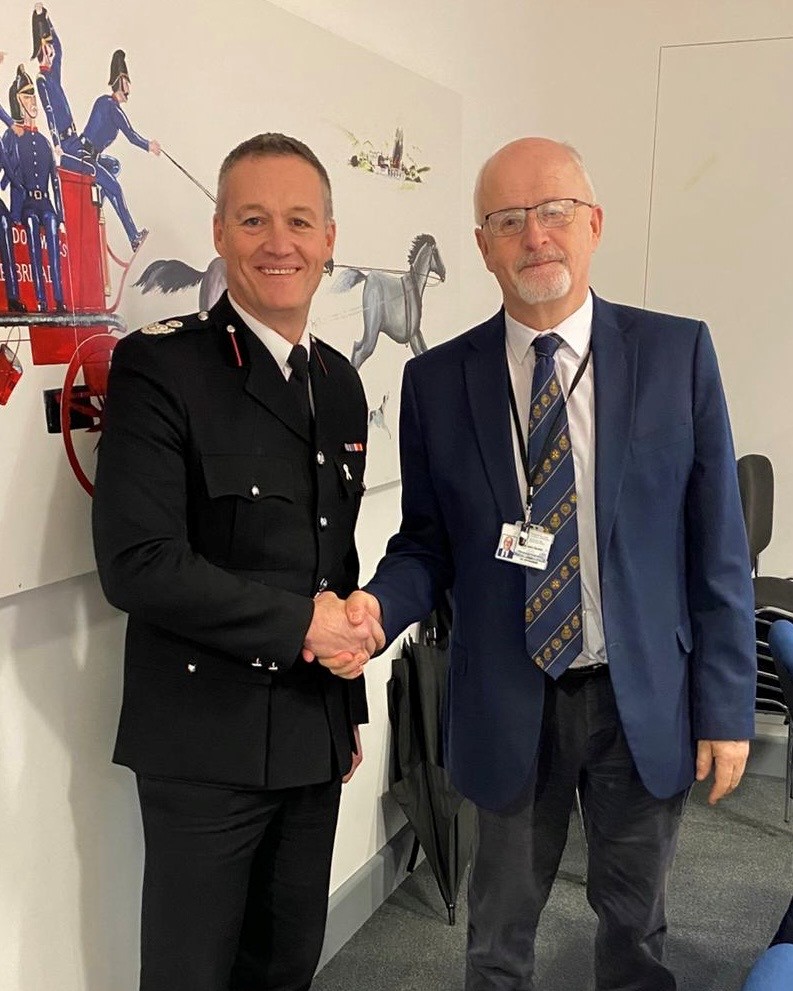
The appointment followed a rigorous, multi-stage recruitment process led by Mid and West Wales Fire and Rescue Authority. Candidates were assessed through structured interviews, strategic leadership exercises and scenario-based assessments designed to test operational judgement, organisational vision and the ability to lead a modern fire and rescue service.
External professional assessors were also engaged to provide independent scrutiny, ensuring the process met high standards of fairness, transparency and challenge.
Mr Flannery emerged as the strongest candidate, demonstrating clear strategic leadership capability, detailed organisational knowledge and a strong commitment to community safety and service improvement.
Councillor John Davies, Chair of Mid and West Wales Fire and Rescue Authority, said: “Craig brings a deep understanding of our Service and a clear vision for its future. His appointment will strengthen our ability to innovate, support our workforce and deliver high-quality protection for the communities we serve.
“As we navigate a rapidly changing landscape, Craig’s experience in driving innovation and organisational development will be invaluable in helping us adapt and transform for the future.”
Commenting on his appointment, Mr Flannery said: “It is a privilege to lead this outstanding Service. I am committed to supporting our people, strengthening partnerships and building on the strong foundations already in place.
“As the challenges facing fire and rescue services continue to evolve, we must modernise and innovate, ensuring we have the skills, technology and capability needed to meet the needs of our communities. I look forward to working with colleagues and partners across Mid and West Wales to deliver a resilient, progressive Service that keeps people safe and places our staff at the heart of everything we do.”
Health
Resident doctors in Wales vote to accept new contract

RESIDENT doctors across Wales have voted to accept a new contract, with 83% of those who took part in a referendum backing the agreement, according to BMA Cymru Wales.
The contract includes a four per cent additional investment in the resident doctor workforce and introduces a range of reforms aimed at improving training conditions, wellbeing and long-term workforce sustainability within NHS Wales. The BMA says the deal also supports progress towards pay restoration, which remains a central issue for doctors.
Key changes include new safeguards to limit the most fatiguing working patterns, measures intended to address medical unemployment and career progression concerns, and reforms to study budgets and study leave to improve access to training opportunities.
Negotiations between the BMA’s Welsh Resident Doctors Committee, NHS Wales Employers and the Welsh Government concluded earlier this year. Following a consultation period, a referendum of resident doctors and final-year medical students in Wales was held, resulting in a clear majority in favour of the proposals.
Welsh Resident Doctors Committee chair Dr Oba Babs Osibodu said the agreement marked a significant step forward for doctors working in Wales.
He said: “We’re proud to have negotiated this contract, which offers our colleagues and the future generation of doctors safer terms of service, fairer pay, and better prospects so that they can grow and develop their careers in Wales.
“This contract will help to retain the doctors already in training, and also attract more doctors to work in Wales, where they can offer their expertise and benefit patients.”
Dr Osibodu added that the BMA remains committed to achieving full pay restoration and acknowledged that challenges remain for some doctors.
“Whilst this contract sets the foundations for a brighter future for resident doctors in Wales, we recognise that there are still doctors who are struggling to develop their careers and secure permanent work,” he said. “We need to work with the Welsh Government and NHS employers to address training bottlenecks and underemployment.”
The Welsh Government has previously said it recognises the pressures facing resident doctors and the importance of improving recruitment and retention across NHS Wales, while also highlighting the need to balance pay agreements with wider NHS funding pressures and patient demand.
The new contract is expected to be phased in from August 2026. It will initially apply to doctors in foundation programmes, those in specialty training with unbanded rotas, and new starters, before being rolled out to all resident doctors across Wales.
Crime
Swansea man jailed for online child sex offence dies in prison
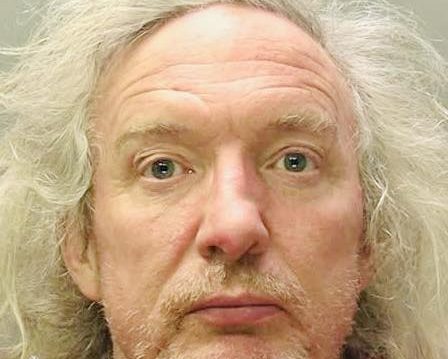
A SWANSEA man who was jailed earlier this year for attempting to engage in sexual communication with a child has died while in custody.
Gareth Davies, aged 59, of the Maritime Quarter, was serving an 18-month prison sentence after being convicted in May of sending sexually explicit messages to what he believed was a 14-year-old girl. The account was in fact a decoy used as part of an online safeguarding operation.
The court heard that Davies began communicating with the decoy between November and December 2024 and persistently pursued the individual, later attempting to arrange a face-to-face meeting. He was arrested after being confronted by the decoy operators.
Davies had pleaded not guilty but was convicted following a trial. At the time of sentencing, police described the messages as extremely concerning and said his imprisonment was necessary to protect children.
It has now been confirmed that Davies died at HMP Parc on Wednesday (Nov 27) while serving his sentence.
The Prisons and Probation Ombudsman has launched an independent investigation into the death, which is standard procedure in all cases where someone dies in custody. No cause of death has been released at this stage.
A coroner will determine the circumstances in due course.
-

 Crime1 day ago
Crime1 day agoMilford Haven man jailed after drunken attack on partner and police officers
-
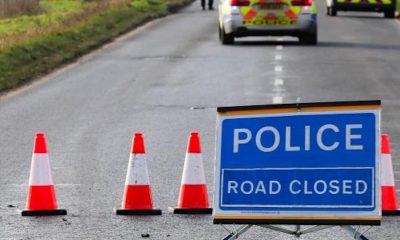
 News4 days ago
News4 days agoDyfed-Powys Police launch major investigation after triple fatal crash
-

 Crime1 day ago
Crime1 day agoTeenager charged following rape allegation at Saundersfoot nightclub
-

 Crime2 days ago
Crime2 days agoMan charged with months of coercive control and assaults
-

 Crime3 days ago
Crime3 days agoMan sent to Crown Court over historic indecent assault allegations
-

 Crime5 days ago
Crime5 days agoMan spared jail after baseball bat incident in Milford Haven
-
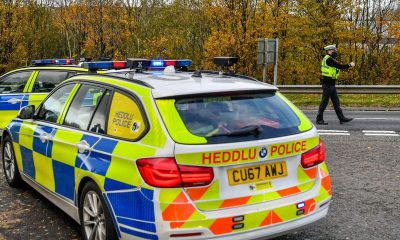
 Crime3 days ago
Crime3 days agoMilford Haven man admits multiple offences after A477 incident
-

 Crime2 days ago
Crime2 days agoWoman ‘terrified in own home’ after ex breaches court order









